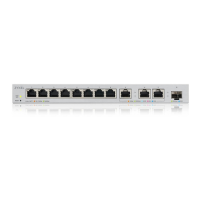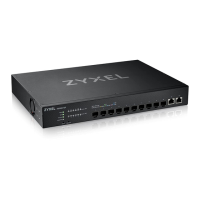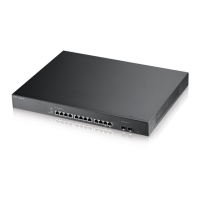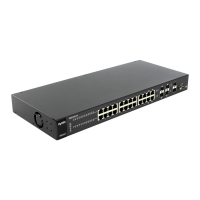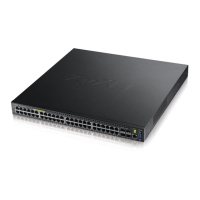Chapter 51 DHCP
XMG1915 Series User’s Guide
291
• VLAN – The Switch is configured on a VLAN by VLAN basis. The Switch can be configured to relay
DHCP requests to different DHCP servers for clients in different VLAN.
51.2 DHCPv4 Relay Status
Click NETWORKING > DHCP > DHCPv4 Relay in the navigation panel. The DHCP Relay Status screen
displays.
Figure 204 NETWORKING > DHCP > DHCPv4 Relay > DHCP Relay Status
The following table describes the labels in this screen.
51.3 DHCPv4 Relay
Configure DHCP relay on the Switch if the DHCP clients and the DHCP server are not in the same
broadcast domain. During the initial IP address leasing, the Switch helps to relay network information
(such as the IP address and subnet mask) between a DHCP client and a DHCP server. Once the DHCP
client obtains an IP address and can connect to the network, network information renewal is done
between the DHCP client and the DHCP server without the help of the Switch.
The Switch can be configured as a global DHCP relay. This means that the Switch forwards all DHCP
requests from all domains to the same DHCP server. You can also configure the Switch to relay DHCP
information based on the VLAN membership of the DHCP clients.
Table 158 NETWORKING > DHCP > DHCPv4 Relay > DHCP Relay Status
LABEL DESCRIPTION
Relay
Mode
This field displays:
None – if the Switch is not configured as a DHCP relay agent.
Smart– if the Switch is configured as a DHCP relay agent only.
VLAN – followed by a VLAN ID or multiple VLAN IDs if it is configured as a relay agent for specific
VLANs.
VID This field displays the ID number of the VLAN for which the Switch acts as a DHCP relay agent.
Current
Source
Address
This field displays the source IP address of the DHCP requests that the Switch forwards to a DHCP
server.

